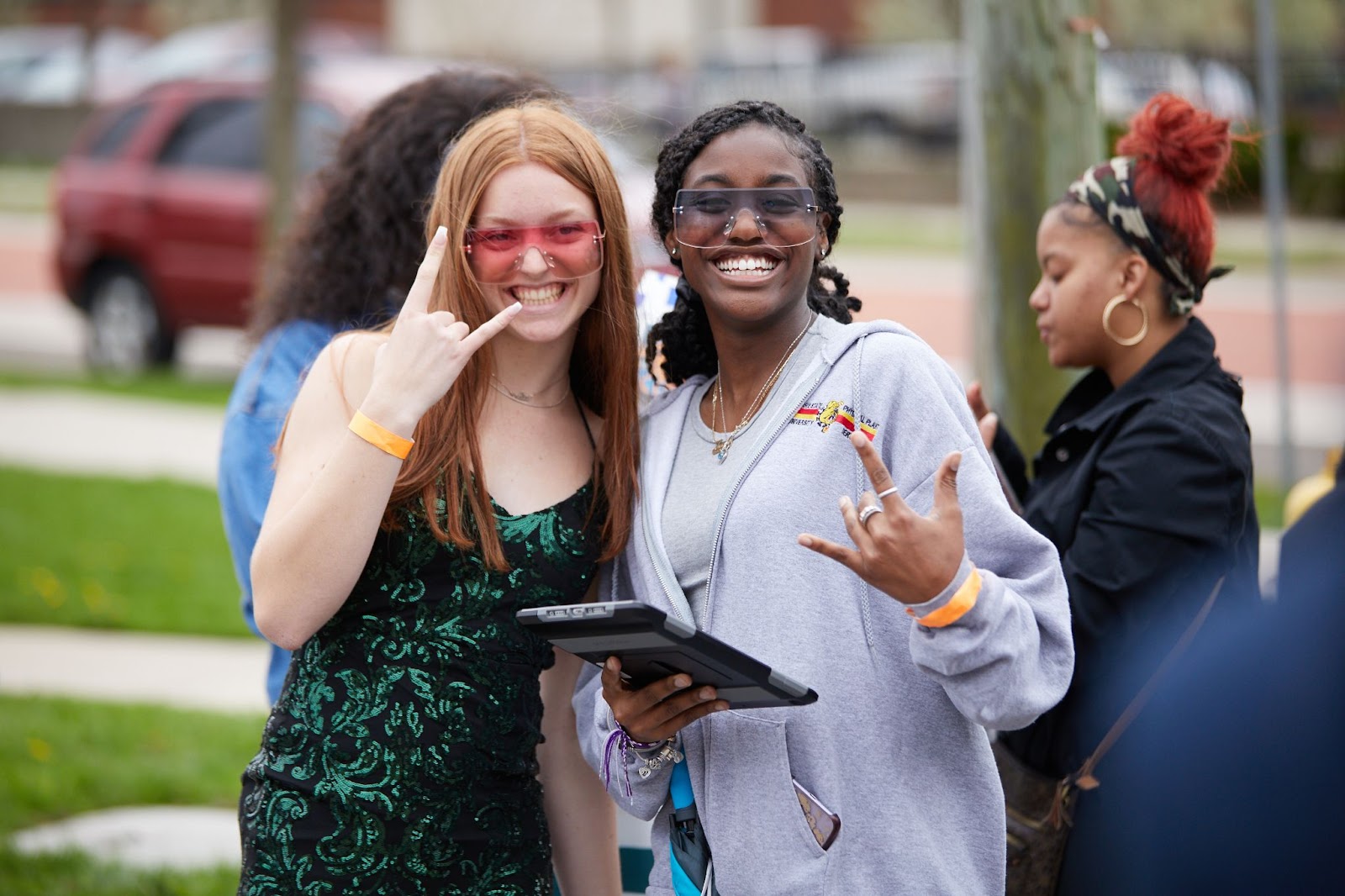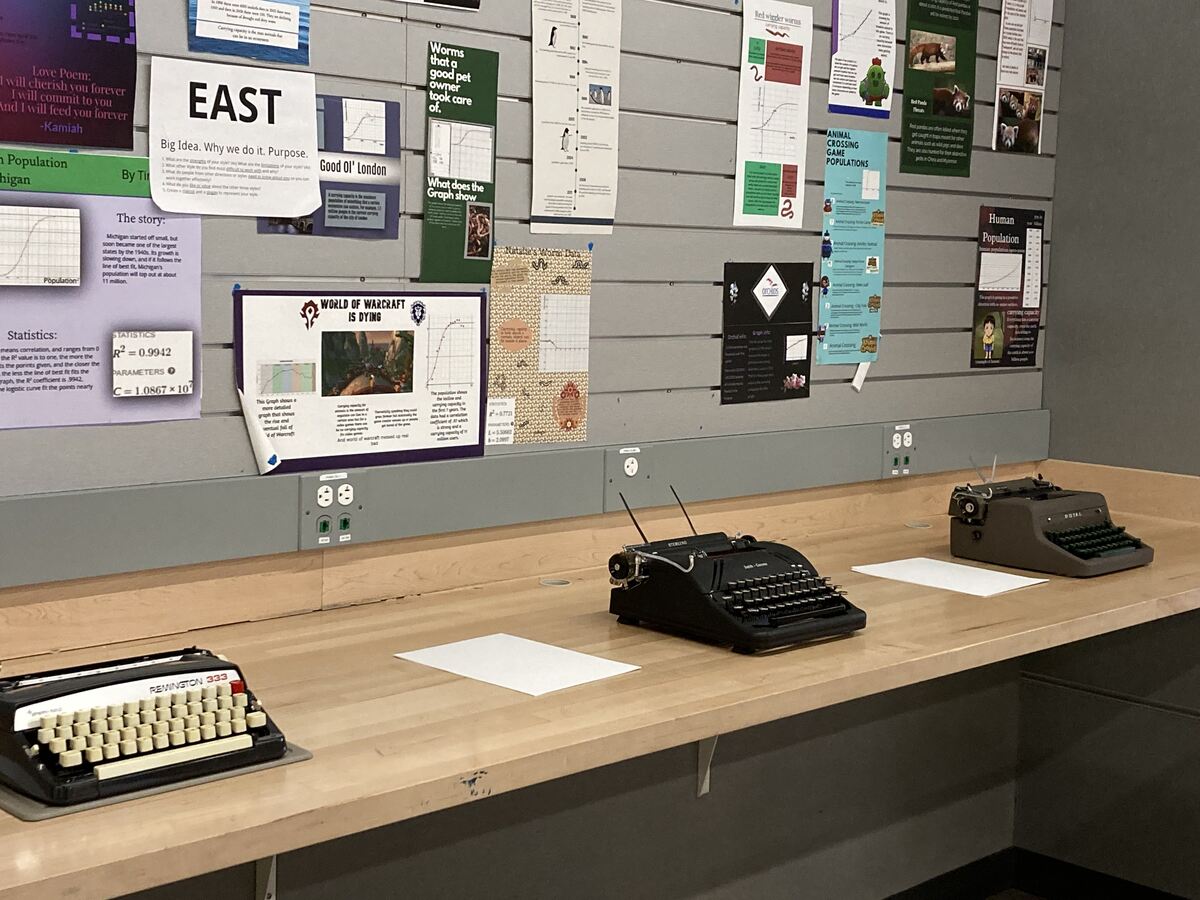A Michigan High School Where the Future Turns to the Past
Students at the Grand Rapids Public Museum School are heading back to class for the…

Students at the Grand Rapids Public Museum School are heading back to class for the 2022-23 academic year at a high school that sounds like the plot of a young adult novel: a former museum building filled with 250,000 cultural and historical artifacts that are actively used in the school’s learning environment.
GRPMS is an XQ high school that opened in 2018 and graduated its first students in May of 2022. Its founders wanted to build on the success of the GRPMS middle school, housed inside the museum’s current home, and provide a similar approach to hands-on learning for students in grades 9-12 in this western Michigan city. Over the past four years, the high school has been recognized nationally for its transformative approach to learning. Students take part in experiential and project-based learning and forge partnerships with local community members to solve real-world problems facing their city and region.
Data on the first GRPMS graduating class of 56 students also demonstrate the school’s success. Ninety percent finished in four years—compared to 79 percent for the Grand Rapids Public Schools district overall, and 80 percent of seniors statewide (in 2021). Seventy-two percent of GRPMS graduates planned to attend a two- or four-year school, compared to 53 percent of the district’s graduates (based on 2021 data). They’re attending a diverse range of schools, from the University of Michigan to Kendall College of Art and Design, and more than half of all grads are going to Grand Rapids Community College—taking advantage of the Grand Rapids Promise, which covers the cost of tuition, fees, and textbooks. GRPMS seniors also outperformed their counterparts on the state social studies and science tests when they were juniors.
GRPMS students during a graduation rehearsal in May, 2022 (photo by Chris Chandler)
XQ spoke with students during graduation season in May about their time at GRPMS and how the school transformed their lives. It’s not just their words that left an impression. Their creative projects and partnerships over these last four years clearly show the school’s impact.
Connecting to the Community
From day one, GRPMS has made Grand Rapids its classroom. Students spend significant time working with community partners all over the city, from universities and nonprofit groups to local scientists, artists, and businesspeople.
“Excursions and community partnerships are a huge part of our school,” said principal Christopher Hanks. “We try to connect learning experiences with things going in the community and getting students involved by having seats at the table over decision making about their city.”
Farryn, who’s now a senior, was inspired to start a community garden for her capstone project after studying city planning and sustainability in Grand Rapids. Another student, Trinity, who’s now a sophomore, developed her own passion in ninth grade after visiting Heartside Ministry, a local homeless shelter. She had the chance to speak with people experiencing homelessness directly, seeing firsthand the impact of issues like gentrification. She then took a creative approach to writing about what she learned: a poem.
“My poem was about homeless people and how we see them and how they play a big part in our society, especially in downtown Grand Rapids,” Trinity explained. She reflected on how “we are all the same” but have different struggles, adding, “We all have stories to tell. They just need listeners.”
For Trinity, projects like this are unlike anything she’d ever done in school before coming to GRPMS, and she said they changed the way she looks at learning.
“It took me some time to get used to, because when I went to middle school, they didn’t really focus on society, and they didn’t really have us do big projects,” she said. “If we did, it would just be about global history or something else. So it was really different, and I actually like it because I get to learn about my neighborhood and what’s around me. It’s very eye-opening.”
Throughout their four years at GRPMS, students participate in a number of similarly engaging core projects centered around community. Some took part in a neighborhood project where they meet and work with local community partners to learn about the factors that have shaped their city; others described a nine-week course led by artists from a local nonprofit The Diatribe that blends poetry, creative writing, and social justice to learn about housing inequality in Grand Rapids. Through all of it, students gain insight into the place they call home. Even during COVID and remote learning, students continued to meet with partners over Zoom and took projects online. For the ninth-grade neighborhood project, they created a virtual interactive map through Google Maps.
Hanks said community partnerships are a cornerstone of innovative high schools like GRPMS because they bring learning to life, giving students a better understanding of their home and the world beyond their local community. They also provide students with important life skills they’ll carry long after graduation that will serve them well in college, career, and real life.
“It’s all about experiences, and not reading about experiences but putting ourselves into experiences and situations,” he explained. “Students have all cold-called a business or nonprofit to do some research or interview someone. They’ve led a team on a project. These are just activities that are normal at our school that every student experiences.”
Archives in Action
Of course, you can’t go to school inside a museum without exploring its artifacts and archives, and the Grand Rapids Public Museum plays a huge role in creating learning experiences that challenge students in their thinking and inspire curiosity. Nowhere is this displayed better than in the school’s unique curation program.
GRPMS students work with artifacts lab teacher Ben Kruid, who believes he is one of the only curation teachers at the high school level in the U.S. (they’re typically found in higher education). Kruid said students gain critical thinking skills as they explore objects, learn to ask questions and make connections to their own interests while they develop a deeper curiosity. For example, students had to find and identify an artifact within the museum’s archives that had yet to be added to the museum’s database. So far, they’ve uncovered treasures like a spacesuit from an Apollo space mission and a flapper dress from the 1920s, researched each item and its era in history, and added the information to the official museum catalog.
By exploring the museum’s archives, students have been able to study unusual objects such as a 19th century bed warmer and a Cold War-era civil defense guide in the event of a nuclear attack. While these items provide a glimpse into the past, they also serve as a launchpoint for current events. For instance, the nuclear guidebook led to a discussion about the war in Ukraine and a deeper reflection on nuclear disarmament. And instead of writing traditional research papers, students present their findings in a way that’s more aligned with 21st century learning—creating infographics, podcasts, and more. After working closely with individual objects, students can also design and pitch their very own museum, addressing topics they feel are missing from their community.
“We look at the role museums play in communities and what stories aren’t being told,” Kruid explained. “We’re really trying to get them to think about what’s in our community, what are the needs, and what’s not being met.”
Students designed everything from mission and visitation statements to floor plans for their proposed museums—and pitched their ideas to a board of experts and members of the Grand Rapids Public Museum. For example, one project sought to help spread information about climate change. Some student pitches were then displayed in the high school. Students also utilize old museum exhibits to support their learning. Recently, they reinstalled a previous museum exhibition about Reconstruction and Civil Rights that had been placed in the archives, putting it up in the high school as part of their tenth grade study of the Civil Rights era.
These projects are effective because the school’s curriculum encourages students to discover their personal passions. That work starts with teachers who model their own interests and curiosity.
Discovering Passion Projects
GRPMS student Farryn, who will graduate in 2023, said history and government are two of her favorite subjects, thanks to her teachers. “It wasn’t superficial,” she said, of their teaching approach. “It was more personal and in depth. Teachers use their own knowledge and perspective, and it was something really nice to see.”
In turn, students are inspired to dive deeply into topics that interest them, as reflected beautifully by their senior capstone projects. Members of the class of 2022 presented the culmination of their capstone work for classmates, families, and community members just before graduating. Topics ranged from growing up in a deaf household to deconstructing toxic masculinity. Another student, Esteban, used his capstone to explore his love of typewriters. During the pandemic he collected and refurbished nearly a dozen 20th century typewriters (most of them manual), which in turn led him to form the Grand Rapids Typewriter Society. This effort to connect other members of his community was even featured in the local news.

Projects like these don’t exist in most traditional high schools, so it’s no surprise that students also aren’t evaluated in traditional ways. GRPMS got permission from its district to avoid traditional letter grades and instead utilizes competency-based assessments. Every student is deemed either excelling, proficient, or not yet proficient in a number of competencies that are inclusive of state standards. Students are still gaining important knowledge, like critical reading and math skills, just not through the standard letter grades most are accustomed to—although the assessments they receive can be translated into GPAs for college.
Since their first year, Hanks and his teachers have worked hard to create consistency across courses, as well as curriculum maps to make it clear for students and families to understand the system. Caleb, a senior who will graduate in 2023, said it’s very different from an ordinary school. “Our teachers do a really good job communicating where we do good or bad, rather than just giving a grade and not saying anything,” he said.
A Lasting Legacy
While exploring the past to better understand their future is second nature for GRPMS students, it was fitting that one of the last activities for students at a high school housed in a museum would be digging one last time through an archive—only this time, it was an archive of their own making.
Around the same time they received their diplomas, members of the class of 2022 unearthed a time capsule that they buried years before as sixth graders (many of the high school students attended the GRPMS middle school, too). Inside, students rediscovered projects and samples of work from middle school along with letters they had written to themselves, sharing their aspirations and goals for the future.
For many, the predictions were eerily prescient. Several students were actually heading to the colleges they had hoped to attend. Another student who wanted to be a writer in sixth grade had already begun her first novel for her senior capstone project.
All of the seniors then wrote another letter to themselves, closed the time capsule, and added it to the museum archives to be opened again in 20 years. Where they’ll be then is anyone’s guess, but it’s safe to say that the skills and experiences from their time at GRPMS will serve them well wherever they go.
Learn more about GRPMS and all of the XQ schools and partners who are rethinking high school for all learners at xqstaging.wpengine.com and join the conversation on social media using #RethinkHighSchool.
Top photo by Chris Chandler









